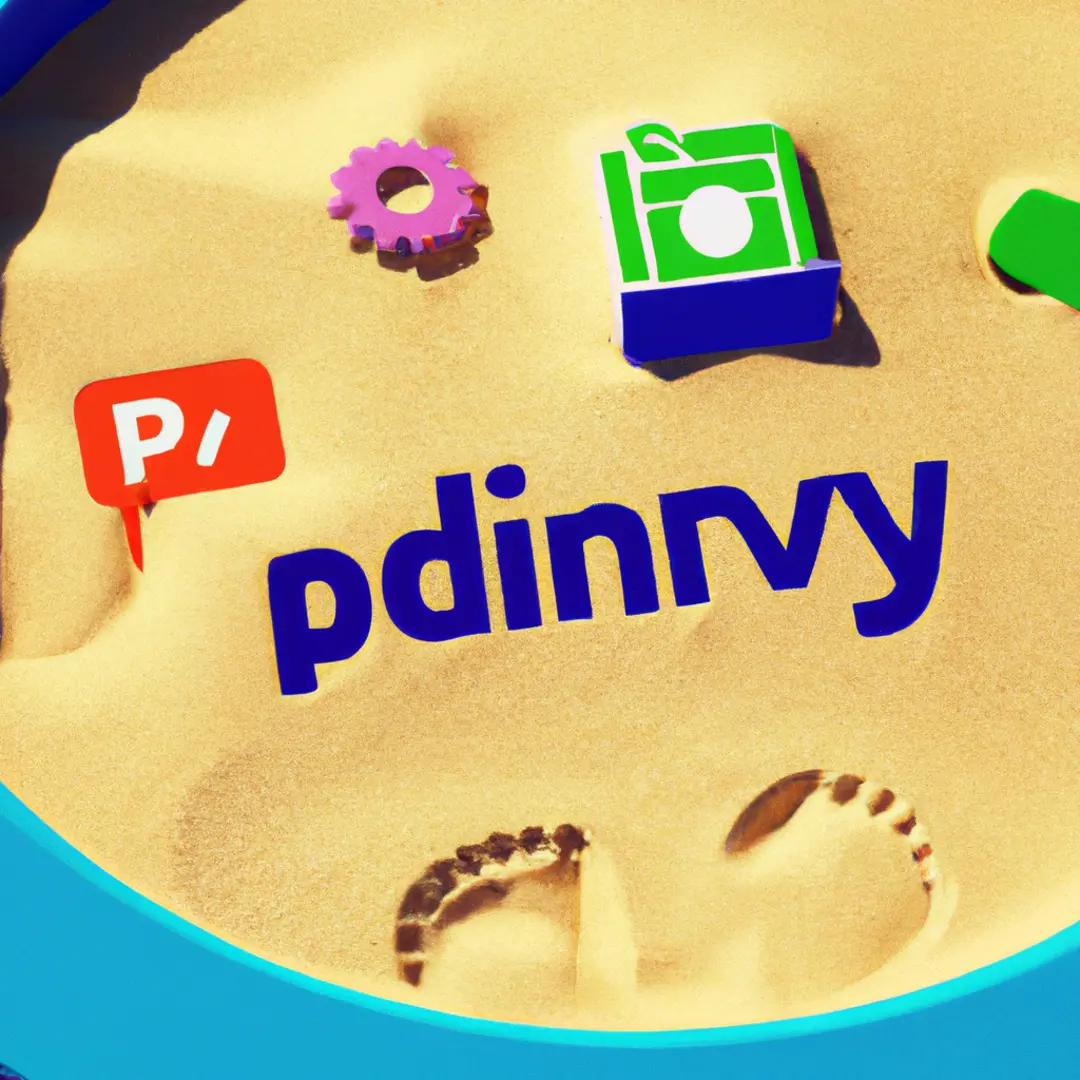Table of contents
- Introduction to the Privacy Sandbox
- The Technical Underpinnings of the Privacy Sandbox
- Exploring the Privacy Sandbox Proposals
- Key Proposals and Their Impact on Privacy
- Addressing Technical Challenges and Concerns
- Community Engagement and Industry Feedback
- Additional Resources and Further Reading
- The Future of the Privacy Sandbox and Online Advertising
- Conclusion: The Balancing Act of Privacy and Digital Innovation
Introduction to the Privacy Sandbox

Defining the Privacy Sandbox Initiative
The Privacy Sandbox initiative aims to create technologies that both protect people’s privacy online and give companies and developers tools to build thriving digital businesses.
The Dual Objectives of the Privacy-Sandbox
The Privacy-Sandbox has two core aims:
- Phase out support for third-party cookies when new solutions are in place.
- Reduce cross-site and cross-app tracking while helping to keep online content and services free for all.
The Evolving Role of Web Browsers
The Privacy Sandbox APIs require web browsers to take on a new role. Rather than working with limited tools and protections, the APIs allow a user’s browser to act on the user’s behalf—locally, on their device—to protect the user’s identifying information as they navigate the web. This is a shift in direction for browsers.
The Vision for a Privacy-First Web Experience
The privacy-sandbox’s vision of the future has browsers providing specific tools to satisfy specific use cases, while preserving user privacy.
The Technical Underpinnings of the privacy sandbox

How the Privacy Sandbox APIs Work
The Privacy Sandbox APIs enable web browsers to protect user privacy by locally processing and managing identifying information. This allows for a more secure and private web browsing experience.
The Shift from Third-Party Cookies to New Solutions
The Privacy-Sandbox aims to phase out the use of third-party cookies and replace them with new, privacy-focused solutions. This shift will enhance user privacy while still allowing for personalized online experiences.
Enhancing User Privacy While Browsing
With the privacy sandbox, web browsers will have the ability to provide enhanced privacy features, such as strengthened cross-site privacy boundaries and protection against covert tracking techniques.
Exploring the Privacy-Sandbox Proposals

Overview of Current Proposals and Their Status
Chrome and other ecosystem stakeholders have offered more than 30 proposals to date, covering a wide variety of use cases and requirements. These proposals go through a lifecycle of discussion, testing, and scaled adoption before becoming web standards.
Strengthening Cross-Site Privacy Boundaries
Several proposals aim to strengthen cross-site privacy boundaries, including CHIPS, Related Website Sets, Shared Storage, Storage Partitioning, Fenced Frames, Network State Partitioning, and Federated Credential Management (FedCM).
Enabling Relevant Content and Ads Without Compromising Privacy
The Privacy Sandbox proposals also include the Topics API and Protected Audience API, which enable interest-based advertising and ad selection without the use of third-party cookies or tracking user behavior across sites.
Measuring Digital Ads Effectiveness Anonymously
Proposals like Attribution Reporting and Private Aggregation API allow for the measurement of digital ads’ effectiveness while maintaining user privacy through anonymous reporting and summary reports.
Preventing Covert Tracking Techniques
The Privacy-Sandbox proposals also address the need to prevent covert tracking techniques, such as User-Agent reduction, User-Agent Client Hints, IP Protection, Bounce Tracking Mitigations, and Privacy Budget.
Combating Web Spam and Fraud
Proposals like Private State Tokens aim to combat web spam and fraud by allowing websites to convey limited information across browsing contexts without passive tracking.
Key Proposals and Their Impact on Privacy

CHIPS: Partitioned Cookies and Privacy
The CHIPS proposal allows developers to opt-in a cookie to partitioned storage, with a separate cookie jar per top-level site. This enhances privacy by isolating cookies between different sites.
Fenced Frames and Secure Content Embedding
The Fenced Frames proposal enables the secure embedding of content onto a page without sharing cross-site data. This prevents unauthorized access to user information.
Topics API: A New Approach to Interest-Based Advertising
The Topics API proposal allows for interest-based advertising without the use of third-party cookies or tracking user behavior across sites. This ensures privacy while still delivering relevant content and ads.
Attribution Reporting for Transparent Conversion Measurement
The Attribution Reporting proposal enables the correlation of ad clicks or ad views with conversions, providing ad techs with valuable insights while maintaining user privacy.
Private Aggregation API for Summary Reporting
The Private Aggregation API proposal allows for the generation of noisy summary reports with cross-site data, ensuring privacy while still providing aggregated information for analysis.
Addressing Technical Challenges and Concerns

Reducing the Risk of User Fingerprinting
Privacy-Sandbox proposals like User-Agent reduction and User-Agent Client Hints aim to limit passively shared browser data, reducing the risk of user fingerprinting and protecting user privacy.
Protecting User IP Addresses
The IP Protection proposal focuses on improving user privacy by protecting their IP address from being used for tracking purposes.
Mitigating Bounce Tracking
The Bounce Tracking Mitigations proposal aims to reduce or eliminate the ability of bounce tracking to recognize people across different contexts, enhancing user privacy.
Implementing a Privacy Budget to Limit Data Exposure
The Privacy Budget proposal suggests limiting the amount of individual user data exposed to sites, preventing covert tracking and ensuring user privacy.
Community Engagement and Industry Feedback

How to Engage with the privacy sandbox Development
Developers and industry leaders are encouraged to provide feedback and engage with the privacy sandbox development process. This can be done through GitHub, W3C groups, and the Privacy Sandbox Developer Support repo.
Channels for Providing Feedback and Raising Concerns
Feedback and concerns regarding the Privacy-Sandbox can be shared through GitHub, W3C Improving Web Advertising Business Group, Privacy Community Group, and Web Incubator Community Group.
Support and Resources for Developers
Developers can find support and resources for working with the Privacy Sandbox through the Privacy Sandbox Developer Support repo, where they can ask questions and join discussions.
Additional Resources and Further Reading

Deep Dives into Specific Aspects of the Privacy Sandbox
For more in-depth information on specific aspects, refer to resources such as Chromium’s overview of the Privacy Sandbox.
Learning from Google AI Blog: Federated Learning
The Google AI Blog’s article on Federated Learning explores collaborative machine learning without centralized training data, which aligns with the Privacy Sandbox’s vision of privacy-first technologies.
Keeping Up with the privacy-sandbox Progress
Stay up to date on the progress by following the monthly updates in the privacy sandbox blog. The Privacy Sandbox timeline provides a schedule for proposals, and individual proposal repositories on GitHub can be watched or starred for notifications.
The Future of the Privacy-Sandbox and Online Advertising

Timeline and Roadmap for Privacy Sandbox Proposals
The Privacy Sandbox timeline shows the current status and schedule for proposals, allowing stakeholders to track the progress of individual proposals.
Implications for the Advertising Industry
The Privacy Sandbox will have significant implications for the advertising industry, as it introduces new privacy-focused technologies and approaches to online advertising.
The Role of Collaboration in Shaping the Future of Privacy
Collaboration between developers, industry leaders, and users will play a crucial role in shaping the future of online privacy and ensuring a balance between privacy and digital innovation.
Conclusion: The Balancing Act of Privacy and Digital Innovation

Summarizing the Privacy Sandbox’s Goals and Challenges
Google’s Privacy Sandbox aims to protect user privacy while enabling digital businesses to thrive. However, it also faces challenges in finding the right balance between privacy and the needs of advertisers and developers.
Anticipating the Next Steps for the Privacy-Sandbox
The Privacy Sandbox will continue to evolve and undergo testing and adoption phases for proposals. Feedback from developers and industry leaders will be crucial in shaping the future of the Privacy-Sandbox.
Reflecting on the Future of Online Privacy and User Trust
The Privacy Sandbox represents a significant step towards a more privacy-focused web experience. As technologies evolve, it is essential to prioritize user trust and ensure that privacy remains at the forefront of digital innovation.




